GermGuardian AC4300 Review
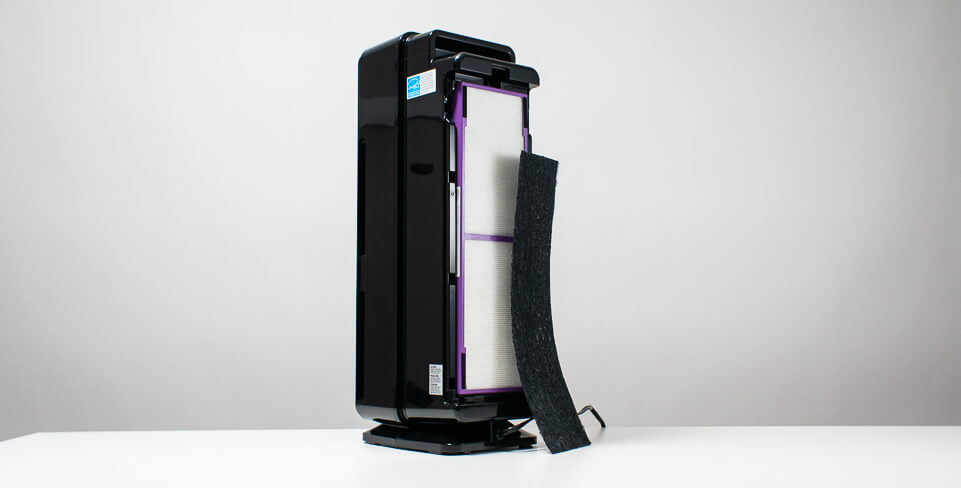
Feature Scores
Pros
- True HEPA filter at affordable price point
- Good output (approx. 120 CFM) for price
- Small and compact with especially small footprint
Cons
- Low quality carbon filter
- UV light efficacy is questionable at best
Editor's Score
Quick Facts
| Particle filter type | HEPA |
|---|---|
| Gas filter type | Carbon |
| Pre-Filter | None |
| Output | Approx. 120 CFM |
| Air Movement | Back grille > carbon filter > HEPA filter > outlets on front of unit |
| Number of fan speeds | 3 – low, medium, high |
| Size | 22 in. tall x 7 in. wide x 8.5 in. deep |
| Weight | 9 lb. |
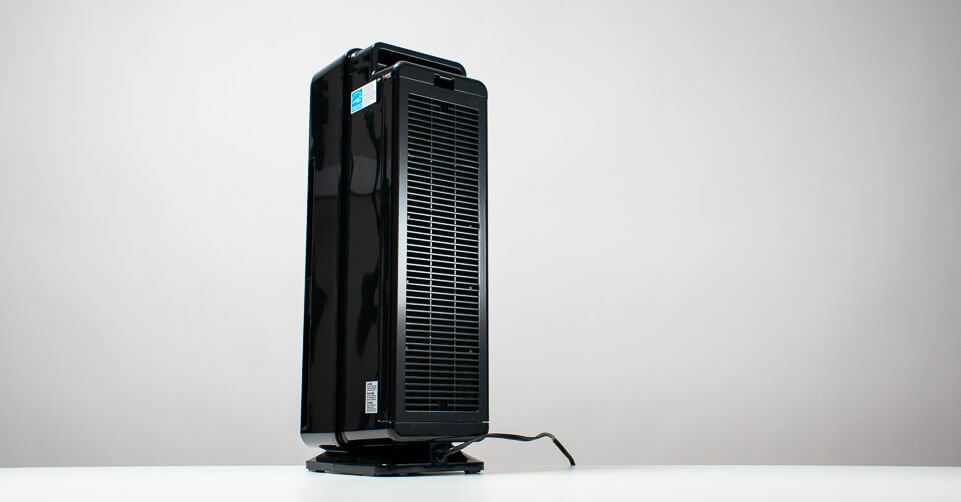



Analysis
A step by step breakdown of the AC4300's performance.
Air Processing Performance
Test Results
In a 150 sq. ft. test environment the AC4300 with its HEPA filter and approx. 120 CFM of output (processes 120 cubic ft. of air per minute) took 26 minutes to lower room particle concentration from 10,000 particles per cubic ft. down to 1,000 particles per cubic ft. The former concentration – 10,000 particles per cubic ft. - is a relatively high particle concentration (dirty air) while the latter concentration – 1,000 particles per cubic ft. – is a relatively low particle concentration (clean air).
For comparison, the very popular AC4825 (approx. 140 CFM) took 23 minutes. Another unit with similar output, the Honeywell HPA100, took 22 minutes.
Higher output units were faster. The Coway Mighty with approx. 250 CFM took only 10 minutes. The Coway AirMega 400 with approx. 430 CFM took only 4 minutes.
To complete testing, we allowed the unit to continue to run indefinitely to see the absolute lowest particle concentration it was able to achieve. The lowest we could measure was 100 particles per cubic ft.
The AC4300 bottomed out at 900 particles per cubic ft. In other words, it could not achieve a particle concentration any lower than 900 particles per cubic ft. in the room. Units with similar output achieved similar results. For example, the Honeywell HPA100 also could not get room particle concentration any lower than 900 particles per cubic ft. The AC4825 did have a slightly better result – it got the room down to 500 particles per cubic ft.
Higher output units were able to achieve the lowest particle concentration we were able to measure – again, that was 100 particles per cubic ft. The Coway Mighty, AirMega 400, and all other units we tested with more than 250 CFM of output were able to get the room down to this ultra-low particle concentration of 100 particles per cubic ft.
So, in summary, lower output units like the AC4300, AC4825, and Honeywell HPA100 take at least twice as long to lower room particle concentration as higher output units like the Coway Mighty and AirMega. Lower output units are also not able to achieve the same ultra low room particle concentration as higher output units when running for an indefinite amount of time in the room.
Filter Analysis
Particle Filter
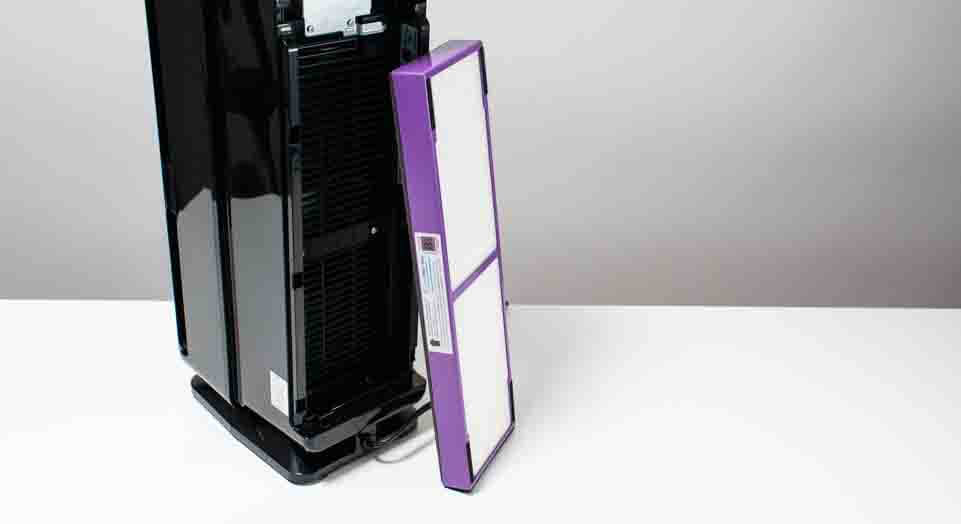
The AC4300 comes equipped with a HEPA filter for the purpose of particle filtration. Air contains two types of contaminants that you may want to remove: unwanted solids/liquids (particles) and unwanted gases (VOCs, odors, etc.). The AC4300’s HEPA filter removes the former type of contaminant – unwanted solids/liquids. These contaminants include allergens, mold spores, smoke particles, and dust.
HEPA filters are ubiquitous in the air purifier industry. Most air purifiers on the market come equipped with this type of particle filter. Even super high end units like the IQAir HealthPro Plus come equipped with the exact same type of particle filter – a HEPA filter. The Coway Mighty and AirMega both come equipped with HEPA filters.
The fact that the AC4300 is equipped with a HEPA filter is impressive considering its price point. At the approx. $100 price point and especially below $100 other less effective types of particle filters are quite common. The aforementioned AC4825 and HPA100 are also equipped with HEPA filters just like the AC4300 but all of these models are outliers at their respective price points.
Much more common is something like the Blue Pure 411. At approx. $100 it has a very similar output to both the AC4300 and AC4825 but it comes equipped with a proprietary particle filter – not a HEPA filter. This proprietary particle filter does not filter particles at the same efficiency as a HEPA filter. HEPA filters are just about as efficient as a particle filter can be with the ability to filter 99.97% of particles that travel through them.
Gas Filter
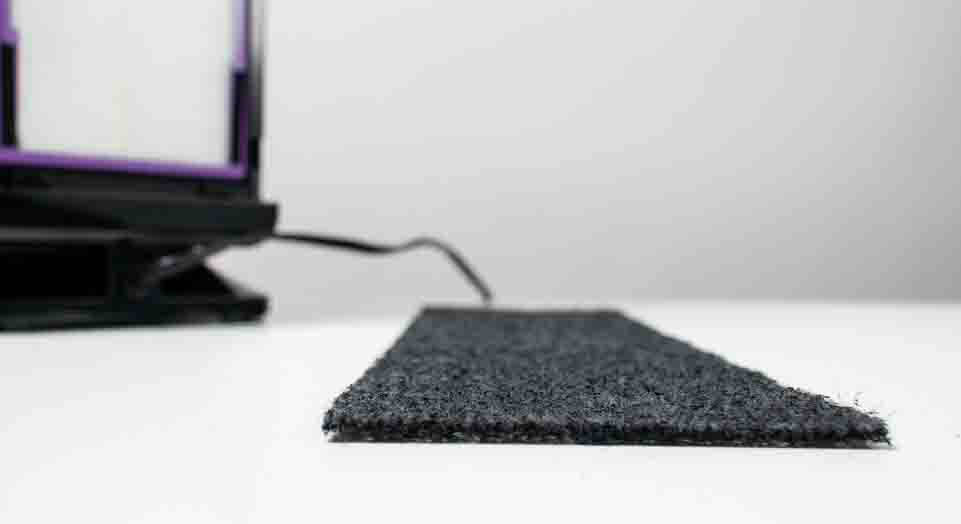
The AC4300 comes equipped with a carbon filter for the purpose of removing unwanted gases like VOCs and odors. The carbon filter is comprised of a fibrous material that is simply coated with carbon. This is one of two types of carbon filters that dominate the market. The other type involves a plastic honeycomb frame that contains actual carbon pellets.
The latter type – containing carbon pellets – is more effective for filtering out gases. So, if gas filtration is a priority for you we would recommend a unit equipped with a pellet-based carbon filter (instead of the fibrous carbon filter of the AC4300). The best option at an affordable price point is the Winix 5500-2. It is one of very few units at approx. $150 and below that come equipped with a pellet-based carbon filter.
Pre-filter
The AC4300 does not come equipped with a dedicated pre-filter. More expensive units usually have a separate pre-filter. The Coway Mighty and Winix 5500-2 both have this type of pre-filter. The pre-filter in these units is the first line of defense against large particles and fibers. It can be removed and cleaned completely separate from the carbon and HEPA filters on these units. The pre-filter in these units is also washable – it does not need to be replaced at cost when it saturates with large particles. It can easily be vacuumed or rinsed, if necessary, for free.
The AC4300, AC4825, and HPA100 do not have a separate pre-filter. The carbon filter on these units doubles up as a pre-filter. Recall that the carbon filter on the AC4300 is made of a fibrous material that’s only coated with carbon. This fibrous material does a great job of filtering out large particles and fibers. The problem is that when it saturates, it has to be replaced at cost. It cannot be vacuumed and rinsed like the pre-filter on more expensive options like the Coway Mighty and WInix 5500-2.
Note: The AC4300’s HEPA filter does have a white fibrous material covering it on one side, but this material is attached to the HEPA filter. It cannot be removed and cleaned separately. Thus, it offers little to no benefit in removing larger particles. These larger particles would collect on and saturate the HEPA filter just the same, regardless of whether the white fibrous material was there or not.
UV
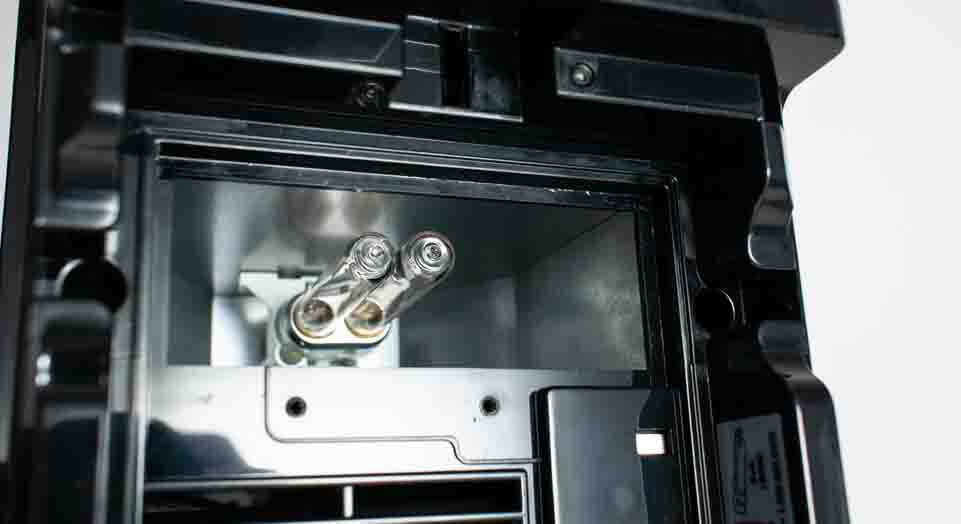
The AC4300, like the AC4825, comes equipped with a UV light. The UV light can easily be turned on/off with a button on the top control panel. The actual light is seated in a compartment on the back of the unit where air enters into it.
We have two issues with UV implementation on this unit:
- the UV bulb is only 5 watts. This is a very low power bulb
- the compartment that holds the UV light is completely separate from the area where airflows through the unit. In other words, the air’s exposure to the light is minimal due to the location and layout of the compartment holding the bulb
The good news here is that you don’t need to kill germs to filter them out of the air. The AC4300’s HEPA filter is able to filter out germs from the air just the same as every other air purifier equipped with a HEPA filter.
The bottom line: Don’t buy the AC4300 because of its UV light but also don’t shy away from buying it because it has a poorly implement UV light.
Air Movement
The AC4300 outputs at approx. 120 CFM. In other words, it is able to process 120 cubic ft. of air every minute (pull in 120 cu. ft. of dirty air and output 120 cu. ft. of clean air every minute). This makes it a viable option for rooms up to about 150 sq. ft.
The aforementioned AC4825 and HPA100 have similar output (in the 100 to 140 CFM) range. They also, can only be used in rooms up to 150 sq. ft.
Higher output units can be used in larger rooms. The Coway Mighty and AirMega can be used in rooms up to 300 sq. ft.
Note that you do have to run lower output units (like the AC4300) on their highest fan speed to effectively lower particle concentration in rooms up to 150 sq. ft. Higher output units (like the Coway Mighty and AirMega) can be run on much lower fan speeds and still effectively lower particle concentration in the same size room. At these lower fan speeds they run much quieter and more energy efficiently.
In other words, the Coway Mighty on medium fan speed has equal output (and therefore equal area of coverage) to the AC4300 on high fan speed. On medium fan speed the Mighty is much quieter and more energy efficient than the AC4300 on high.
Thus, both lower output units and higher output units are viable options in smaller rooms (up to 150 sq. ft.). The latter option (higher output units) just runs more quietly and more energy efficiently.
Special note: the AC4300 cannot be used as a fan. The air outputs towards the sides of the front of the unit. If you’re looking for an air purifier that can double as a fan, something like the Honeywell AirGenius 5 is a much better option as it outputs air directly towards the front of the unit.
Energy Efficiency
The AC4300 has average energy efficiency for its size and output. It draws 41.3 watts of power on high, 35.7 watts on medium, and 32.2 watts on low.
The AC4825 draws 44.2, 38.3, and 34.2 watts on high, medium, and low. The HPA100 draws 50.3, 29.4, and 25.2 watts on high, medium, and low.
Higher output units are generally more energy efficient. For example, the Coway Mighty draws only 8.1 watts on medium and 3.2 watts on low. On medium, it outputs at approx. 100 to 120 CFM.
Thus, at approx. 120 CFM, the AC4300 draws 41.3 watts (high fan speed) while the Coway Mighty draws only 8.1 watts (medium fan speed).
If you’re looking for a highly energy efficient air purifier, the three lower output units we’ve mentioned so far (AC4300, AC4825, HPA100) are all just about equally efficient while higher output units (Coway Mighty, Winix 5500-2, etc.) are generally more efficient.
Noise Output
The AC4300, like the AC4825 is a tower air purifier. Thus, most of the noise it makes comes from air exiting out of the front of the unit. Most other air purifiers output through the top of the air purifier. Thus, most of the noise they make comes from the top of the air purifier.
For noise output testing, we placed the sound meter slightly above and to the front of the air purifier. This gave tower units like the AC4300 and AC4825 that output through the front instead of the top a distinct advantage in our testing.
Not surprisingly, the AC4300 and AC4825 garnered some of the lowest recorded raw dB numbers in our testing. On high fan speed the AC4300 was measured at 58.6 dB and the AC4825 was measured at 61.2 dB. For comparison, the HPA100, a unit with similar CFM to that of the AC4300 and AC4825 but one that outputs out of the top, was measured at 68.7 dB.
Higher output units that also output out of the top had similar recorded noise output. The Coway Mighty was measured at 66.1 dB on high.
The bottom line here is that
- all air purifiers make a substantial amount of noise on high fan speed (high 50s to high 60s dB)
- tower units like the AC4300 only had a lower recorded noise output because of their design; not because they were necessarily any quieter
On lower fan speeds is where we see higher output units outperforming lower output units quite clearly. The Coway Mighty was measured at 48.9 dB on medium and 40 dB on low. The AC4300 was measured at 51.8 dB on medium and 44.2 dB on low – higher raw dB numbers despite its advantage in our testing.
Recall that the Mighty’s output and area of coverage on medium is equal to the AC4300’s output and area of coverage on high. Thus, at approx. 100 to 120 CFM the Mighty has a measured noise output of only 51.8 dB (medium fan speed) while the AC4300 has a measured noise output of 58.6 dB (high fan speed).
If you’re looking for the quietest option for a smaller room (up to 150 sq. ft.) the choice is clear: a higher output unit like the Coway Mighty run on medium and low fan speed. A lower output unit like the AC4300 will have to be run on high fan speed at greater noise output to provide the same results (lower room particle concentration just as fast and to the same low concentration).
Durability
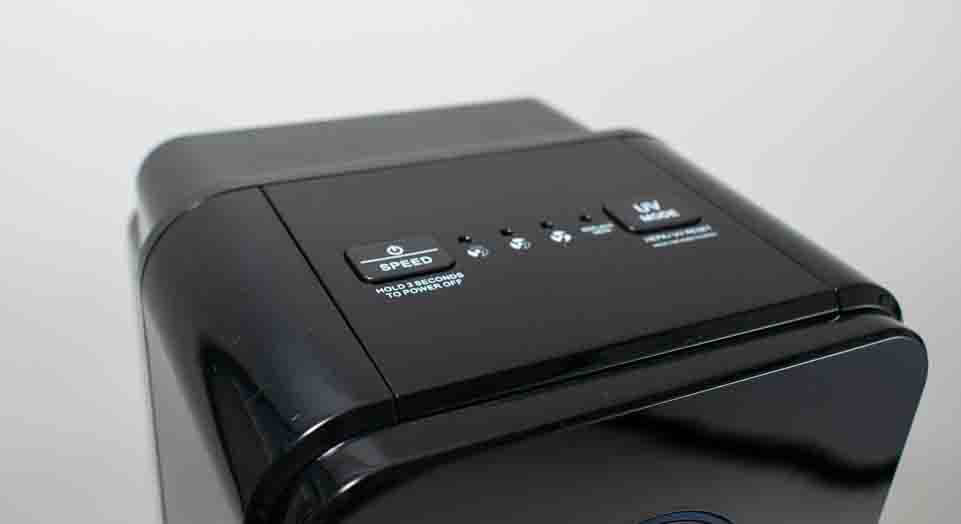
The AC4300 is well built for its price. Comparing it side by side with the AC4825, the AC4300 definitely has a more modern aesthetic, but build quality and the quality of materials used for both units is essentially the same.
More expensive air purifiers are better built with higher quality parts. Comparing the AC4300 side by side with something like the Coway Mighty, it’s clear that the Coway is better built using higher quality parts.
The AC4300, like the AC4825 comes with a 3 year warranty. This is a longer warranty than that of Winix (1 year) and Levoit (2 year) units, just as long as that of Coway (3 year) units, and shorter than that of Honeywell (5 year) units.
Ease of Use
The AC4300 does not allow you to turn all of its control panel lights off. A single green LED illuminates on the top control panel when you set a particular fan speed and a blue ring illuminates on the front of the unit when you turn on the UV light.
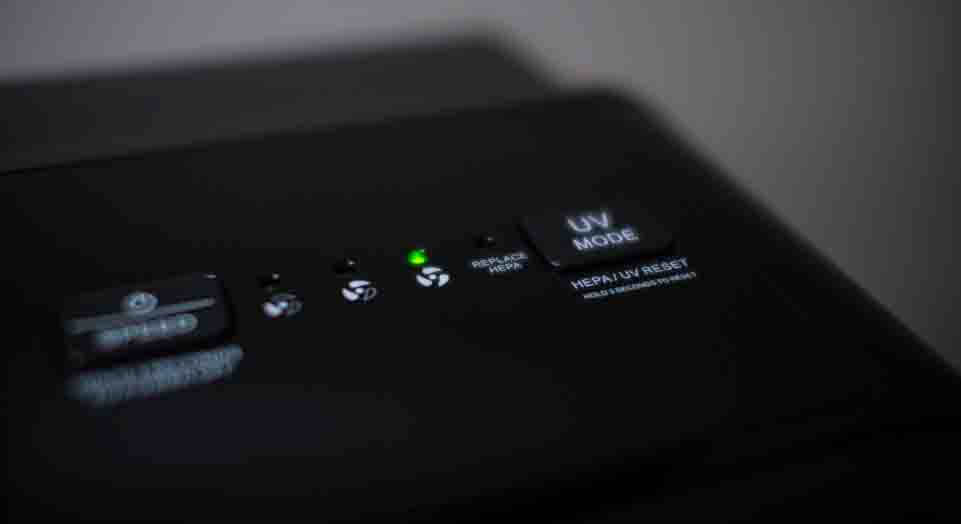
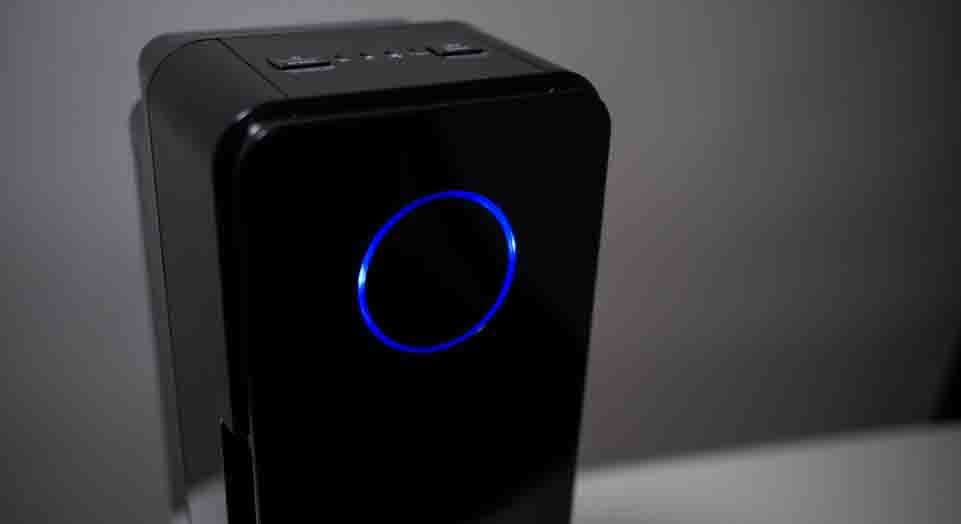
Most other air purifiers on the market also have control panel lights that cannot be turned off. The AC4825 also has a green LED that cannot be turned off. Even the Coway Mighty has multiple control panel LEDs that cannot be turned off.
If being able to turn off all control panel lights is important to you, something like the Honeywell HPA100 might be an option. It does have a dimmer switch that allows you to dim the lights or turn them completely off. However, this unit does have several other shortcomings that you need to consider before opting to buy it. Take a look at our review for the HPA100 for more information.
The AC4300 is a very small and compact appliance. Like the AC4825 it’s only 22 inches tall. It’s only 7 inches wide and 8.5 inches deep. It is about 1 lb. heavier than the AC4825 – about 9 lb. vs. about 8 lb. for the AC4825. Both units are very easy to pick up and move around. Both units have a very small footprint no matter where you put them – on the floor or on a desk.
Like the AC4825 the AC4300 is light on features. It only has 3 fan speeds and a UV light. Those are all of the features. More expensive options like the Coway Mighty come equipped with a timer, an auto mode, and a corresponding air quality sensor and display.
Value
Despite its low price of approx. $100, the AC4300 is generally a poor value compared to its competition, especially the AC4825.
First of all, the AC4825 usually retails for about $20 less. Second, the AC4825’s filters are usually about $5 cheaper. This $5 cost savings repeats itself every time you buy new filters.
Both units have a HEPA filter, the same type of carbon filter, three fan speeds, similar output (CFM), and essentially the same noise output and energy efficiency. The AC4300 does feature a more modern aesthetic but if you’re in the market for a sub $100 air purifier, chances are that aesthetics isn’t that much of a priority for you. All in all, between these two models, the AC4825 is the much better value and the better option overall.
Note that if you move up to a unit in the $150 to $200 range you get even more value. A top rated unit like the Winix 5500-2 retails for about $50 more than the AC4300 but gives you more than double the output (CFM) at much less than double the price. It also provides a separate washable pre-filter (vs no separate pre-filter on the AC4300), a pellet-based carbon filter (vs the fibrous carbon filter on the AC4300), better energy efficiency, and lower noise output.
So, in summary, if value is a top priority for you:
- We recommend the AC4825 over the AC4300
- We recommend a top rated higher CFM unit like the Winix 5500-2 or Coway Mighty over both
Add a Comment
Have a question or comment? Let us know below.

Comments